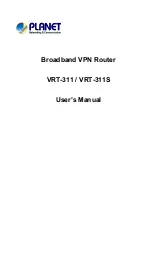
Description
Permits use of multi-line output based on the screen width. This is applicable to
encapsulation dot1q add
command. This is visible only when
show running
config
command is executed when this command is enabled.
Values are
on
or
off
ethernet service
multi-line
Matching criteria to be used to map untagged (native) Ethernet frames entering
an interface to the appropriate EFP.
Only one EFP per port can have untagged encapsulation. However, a port that
hosts EFP matching untagged traffic can also host other EFPs that match tagged
frames.
encapsulation untagged
Configures the default EFP on an interface, acting as a catch-all encapsulation.
All packets are seen as native. If you enter the
rewrite
command with
encapsulation default, the command is rejected.
If the default EFP is the only one configured on a port, it matches all ingress
frames on that port. If you configure the default EFP on a port, you cannot
configure any other EFP on the same port with the same bridge domain.
You can configure only one default EFP per interface. If you try to configure
more than one, the command is rejected.
encapsulation default
Specifies priority-tagged frames. A priority-tagged packet has VLAN ID 0 and
CoS value of 0 to 7.
encapsulation
priority-tagged
If a packet entering or leaving a port does not match any of the encapsulations on that port, the packet is
dropped, resulting in
filtering
on both ingress and egress. The encapsulation must match the packet
on the
wire
to determine filtering criteria.
On the wire
refers to packets ingressing the router before any rewrites and
to packets egressing the router after all rewrites.
The router does not allow overlapping encapsulation configurations.
Note
Ethertype
The router uses the default ether types 0x8100 and 0x88a8 for dot1q and Q-in-Q encapsulations.
Starting with Cisco IOS XE Release 3.15, the ethertypes 0x9100 and 0x9200 are supported using the custom
ethertype feature by configuring the
dot1q tunneling ethertype
command on a physical port.
Custom ethertype allows configuration of the ethertype per port. The 0x9100 and 0x9200 ethertypes are
supported in the custom ethertype model. 802.1q (0x8100) ethertype is the default ethertype, and is configured
under each service instance.
Custom Ethertype
With the custom dot1q ethertype, you can select a non-standard (0x9100 and 0x9200) 2-byte ethertype in
order to identify 802.1Q tagged frames. The router is allowed to interoperate with third party vendors' switches
Carrier Ethernet Configuration Guide (Cisco ASR 920 Series)
17
Ethernet Virtual Connections Configuration
Encapsulation
















































